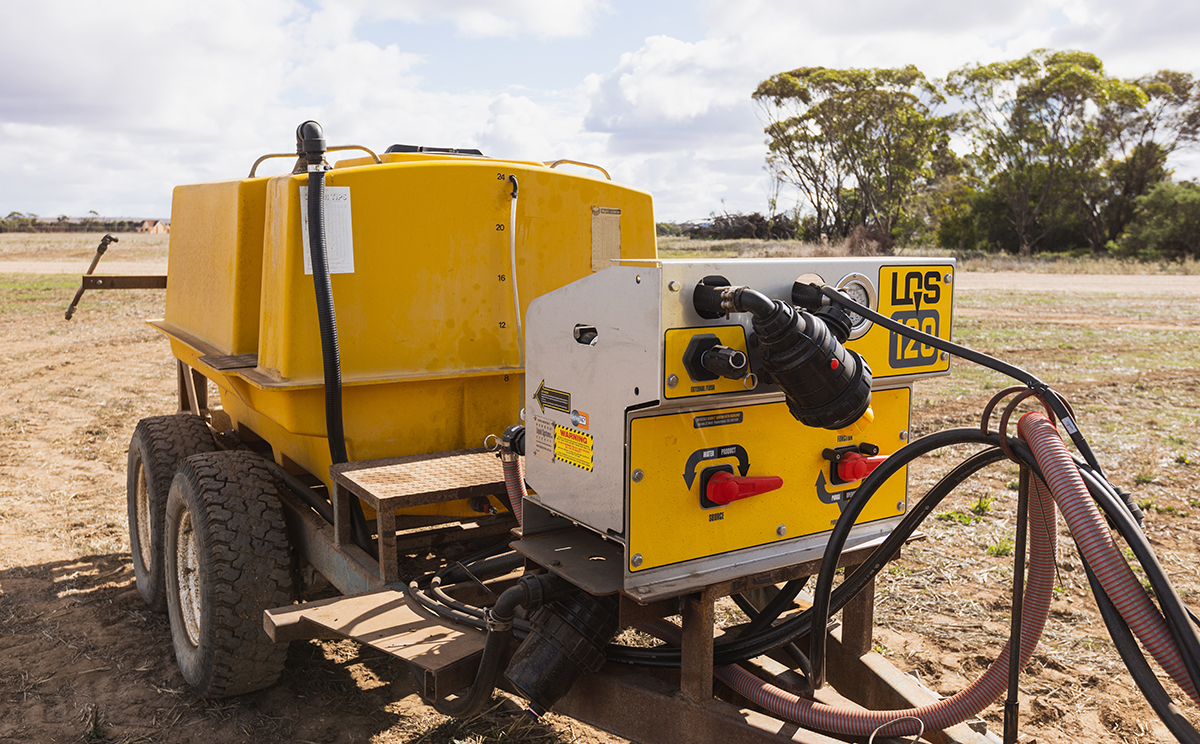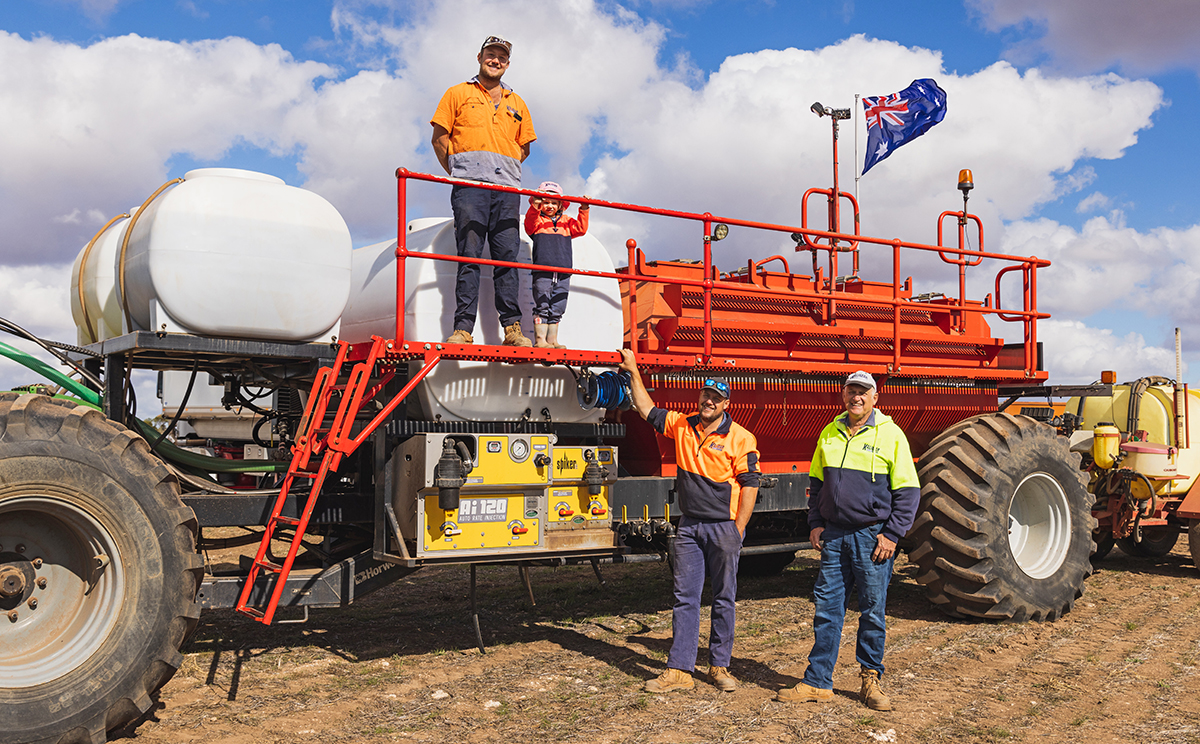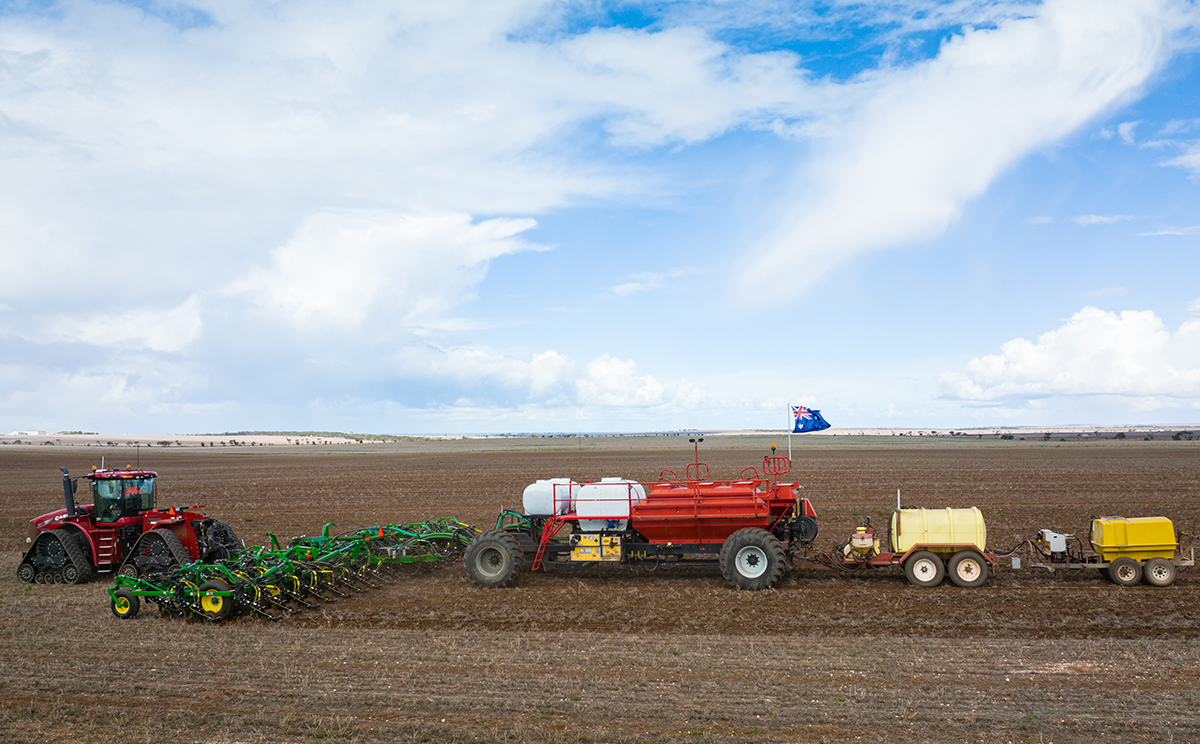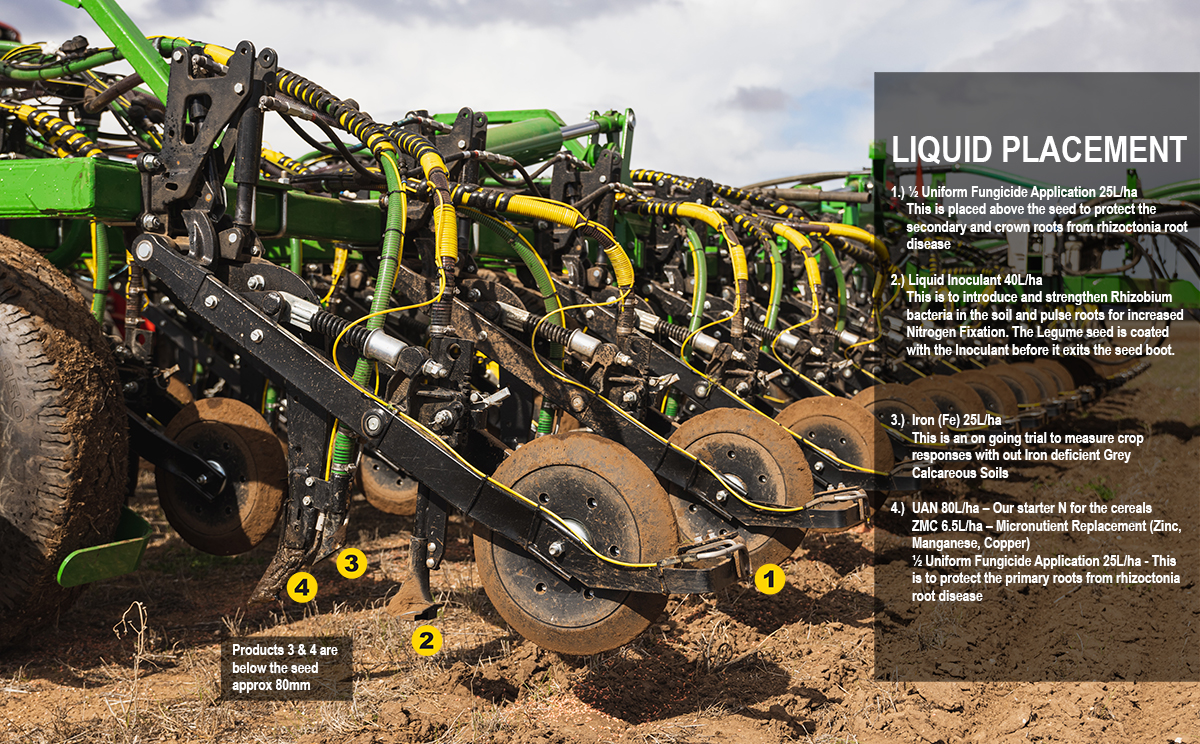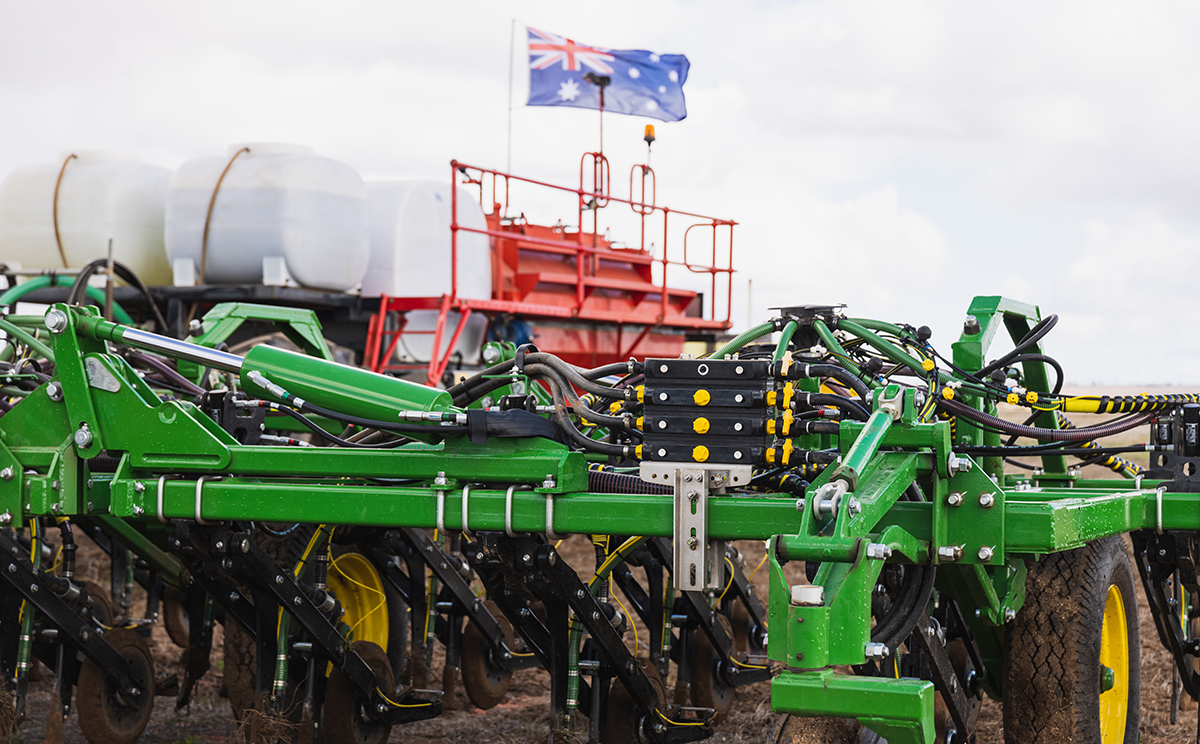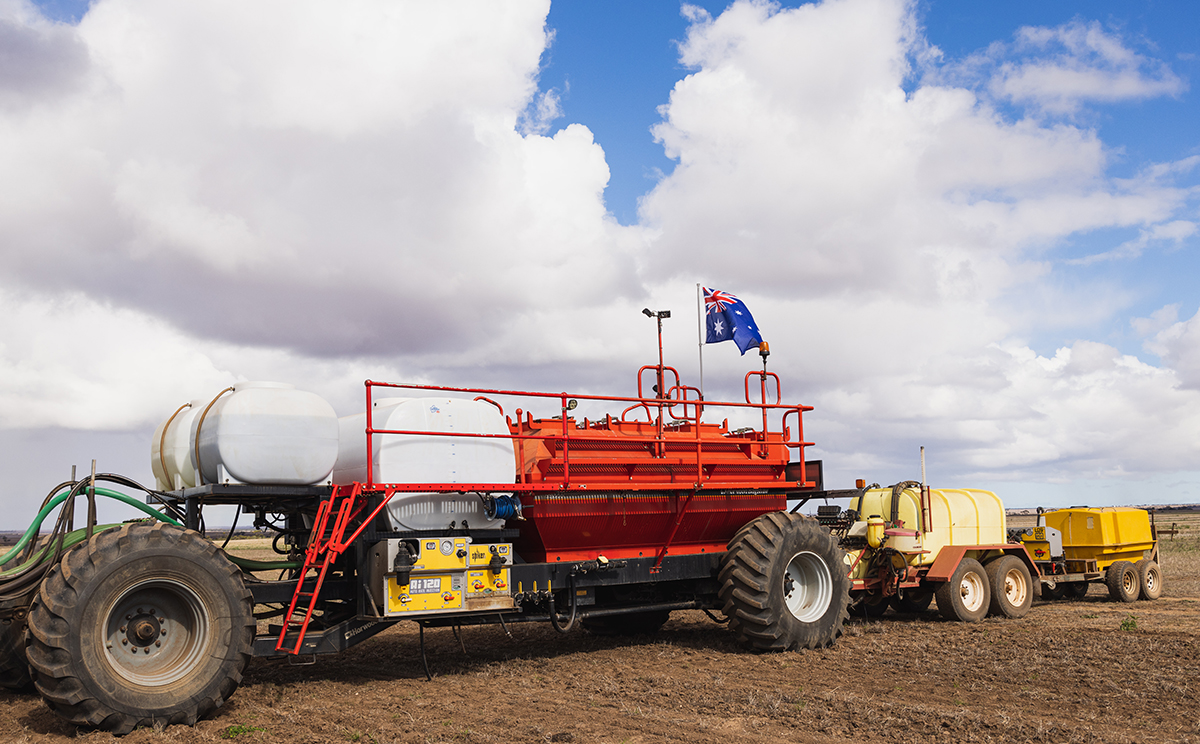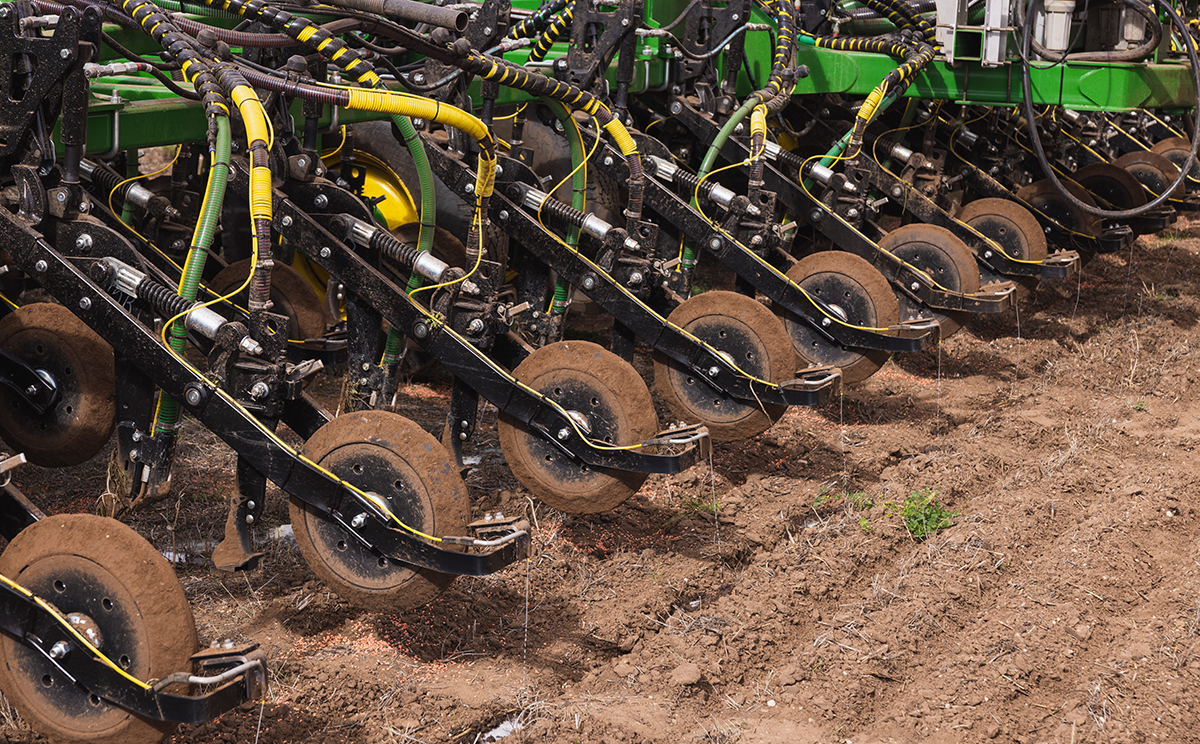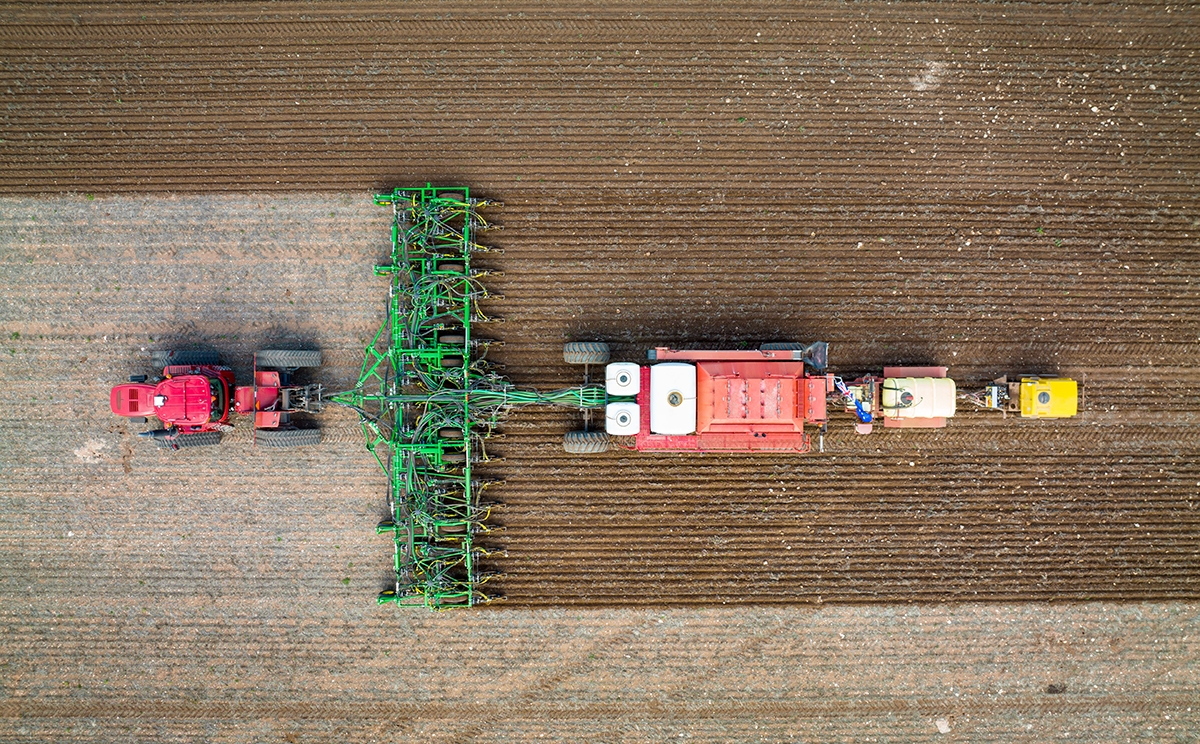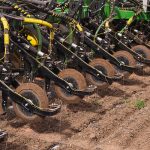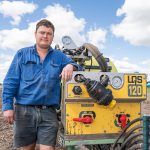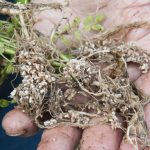Liquid fertilisers give crops a valuable head start
A band-aid approach to fertiliser and fungicide applications at seeding, was costing the Davey family dearly on their Yorke Peninsula farms.
Matthew Davey, who is the sixth generation to farm at Kalimar Park, near Clinton Centre, said they had been using variable rate phosphorus prescription maps since 2004, but this meant it was pointless coating the MAP granules with fungicide.
“We also weren’t putting any nitrogen down at seeding time,” he said. “We’d have to come back early post-emergence and spread nitrogen, then do multiple passes with a sprayer to put out trace elements and try and feed the crop that way, which was more work.”
Irked by the limitations of their equipment, the Davey’s decided to upgrade to a new air seeder and opted to install their first Liquid Systems (SA) unit, an LQS-Ai120 and Spiker Module, in 2015.
“We’d been wanting to do it for years,” Matthew said. “We did all the maths and worked out that we should have been able to pay it off within five years. We actually paid it off in less than two due to fewer machinery passes and better crop health – the results were far better than what we originally thought.”
| ABOUT |
|---|
- WHO: John, Matthew and James Davey
- WHERE: Clinton Centre, South Australia
- CROP:2,200 hectares of wheat, lentils and secondary crops such as barley, canola, faba beans and field peas
- INPUTS: EasyN, trace elements (ZMC sulphate), fungicide, liquid inoculant
- EQUIPMENT: Liquid Systems (SA) LQS-Ai120 and Spiker Module mounted to a modified 12,000L Horwood Bagshaw air cart, with a third LQS-120 module on an old sprayer turned liquid cart. The John Deere P556 Air Hoe Drill has four banks of four “Stacker” manifolds. Three manifolds serve outlets to 54 tyne assemblies; the fourth manifold has dual 10m friction terminal tubes for fungicide placement above and below the seed on each tyne assembly.
| KEY OUTCOMES OF GOING TO A LIQUID SYSTEM |
|---|
- Upfront liquid fertiliser and trace elements, so it’s available when the plants need it, instead of playing catch up during the season
- Faster early vigour and higher yields
- Operational efficiencies from applying multiple nutrients in a single pass
- Inoculating the legume seed while seeding
Matthew said they had heard horror stories of farmers trying to do it cheaper, cobbling things together themselves and making a mess.
“We didn’t want that, and we’ve been able to see that Liquid Systems produces a quality product,” he said. “Yes, it’s probably a bit more than we wanted to spend, but if we were going to do it, we wanted to do it right.”
The Davey’s had the airseeder box extended to accept liquid tanks and bought a 1976 MAN flat top truck that could cart 22 1,000-litre (L) shuttles of liquid chemicals to the paddock.
Since then, they’ve added a third LQS-120 module, a prime mover with 10,000L and 13,000L tanks that does double-duty carting chemicals for seeding and spraying, and upgraded to a John Deere P556 Air Hoe Drill.
The seeding rig has also gotten progressively longer over the years after two older spray units were dragged out of retirement and hooked on the back for injecting inoculant into the seed tube and trialing an iron product.
Cereal crops get 80-100L/ha of Easy N at seeding, as well as variable rate phosphorus replacement of MAP at 80-160kg/ha, 6.5-10L/ha of a ZMC sulphate mix of trace elements and Uniform fungicide at 50L/ha, which is applied half on top of the soil and half at the bottom of the furrow.
Pulse crops receive 6.5L/ha of ZMC sulphate and EasyRhiz inoculant at 40L/ha.
Inputs for canola are similar to the cereals, except for flutriafol fungicide to protect against blackleg and 100kg/ha of granular sulphate of ammonia fertiliser.
“Now we’ve got a healthy rate of nitrogen in the soil below the seed,” Matthew said. “The roots have a nice, healthy band to go down to and find the granular fertiliser – the phosphorus – the liquid nitrogen, ZMC trace elements and the fungicide that protects those early roots and the later crown roots from pruning by rhizoctonia.”
“We also seen really good results from the liquid inoculant. Now we apply it every year as its so easy to do – know more mucking around with mixing seed with inoculant.”
“We’ve done a few trials with some iron, as well,” he said. “The plant doesn’t need much of the micronutrients to grow, but if you’ve taken it all out, they don’t have access to them.”
Matthew said the main difference in crops since they switched to liquids was in early plant health, which has translated into extra yield.
I’d say we’re at least 1t/ha, maybe 1.5t/ha better. We also found a 500kg-1t/ ha yield increase from using Uniform instead of flutriafol and from having the fungicide up front.
“It’s hard to quantify because we made a big jump,” he said. “But you can see if there’s a dry period when people can’t spread nitrogen and their crops are yellow, ours are still green and healthy. In very round numbers I’d say we’re at least 1t/ha, maybe 1.5t/ha better. We also found a 500kg-1t/ ha yield increase from using Uniform instead of flutriafol and from having the fungicide up front.
Matthew said his favourite feature of the Liquid Systems (SA) units was the ability to keep expanding the range and number of chemicals they could apply in a single pass by stacking the manifolds.
“We’ve got four manifolds stacked on top of each other,” he said. “So it’s not like we’re having to find other places on the bar to mount them, because we’re adding all these channels as we go along. Being able to apply all these chemicals at seeding means we can focus on getting herbicide spray jobs done in a more timely manner, without having to worry about trying to feed the crop at the same time. We also have more flexibility now to try out new products. You never know where the next 1-2% increase in yield is going to come from. ”
Whilst making seeding a bit more complex, we benefit from less rush to get the first post-seeding N application out and increased yields and profit from better nutrition and disease control.
Matthew recommended growers who were interested in starting out with liquids begin with the basics.
“Don’t look at what we’re doing and think that’s where you need to start,” he said. “It’s not where we started. We started off with one liquid manifold, one pump and one spiker unit for our ZMC. You don’t need to do it all at once. Once you get your head around the first step, you can look at what you can do next and progress from there.”
We started off with one liquid manifold, one pump and one spiker unit for our ZMC. You don’t need to do it all at once. Once you get your head around the first step, you can look at what you can do next and progress from there.
Mathew has developed a good working relationship with the Liquids Systems (SA) team. “Their service and backup is great and they will work with you to design a system around what equipment you already have –– it’s not just out-of-the-box solutions,” he said.
Matthew said it was exciting to think about all the potential applications for liquid products on the seeder and he shares that enthusiasm with farming systems groups that visit Kalimar Park.
“A heap of farmers came out the other day and they were looking at the root health and they started to get quite excited about what we’re doing,” he said. “They can see the benefits from it, and they are already getting it in their head that this is a direction they want to go.”